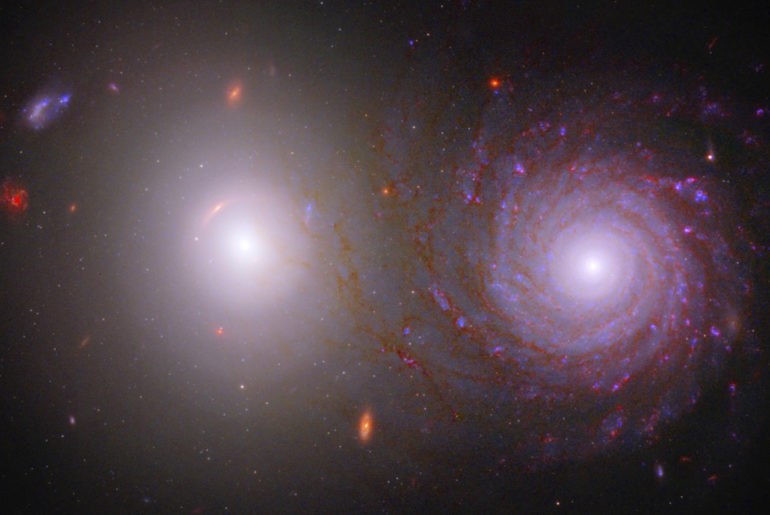
Astronomers combined James Webb Space Telescope and Hubble Space Telescope data to trace light that was emitted by the large white elliptical galaxy on the left through the spiral galaxy on the right. The overlapping galaxy pair VV 191 includes near-infrared light from Webb as well as ultraviolet and visible light from Hubble.

Upon closer inspection, you’ll find that Webb’s near-infrared data also uncovers the galaxy’s longer dusty spiral arms in far more detail, which gives them the appearance of overlapping with the central bulge of the bright white elliptical galaxy on the left. Despite the two foreground galaxies being relatively close, they are not actively interacting. We also see two patchy spirals to the upper left of the elliptical galaxy have similar apparent sizes, but appear to be very different colors. What could be more interesting than these galaxies? How about observing spiders in zero-gravity to see how they spin their webs.
- POWERFUL TELESCOPE FOR ASTRONOMY BEGINNERS: The AstroMaster 114EQ delivers sharp optics, a stable equatorial mount, and smooth manual controls, making...
- HIGH-QUALITY 114MM OPTICS: Enjoy views through the 114mm (4.5”) Newtonian reflector, which features high-quality aluminum and SiO₂ coatings and...
- SMOOTH, ACCURATE POINTING: Effortlessly aim and center your target using the two slow-motion control knobs for right ascension and declination whether...

These images of the lensed galaxy are so faint and so red that they went unrecognized in Hubble data, but are unmistakable in Webb’s near-infrared image. Simulations of gravitationally lensed galaxies like this help researchers reconstruct how much mass is in individual stars, along with how much dark matter is in the core of this galaxy,” said the ESA.





